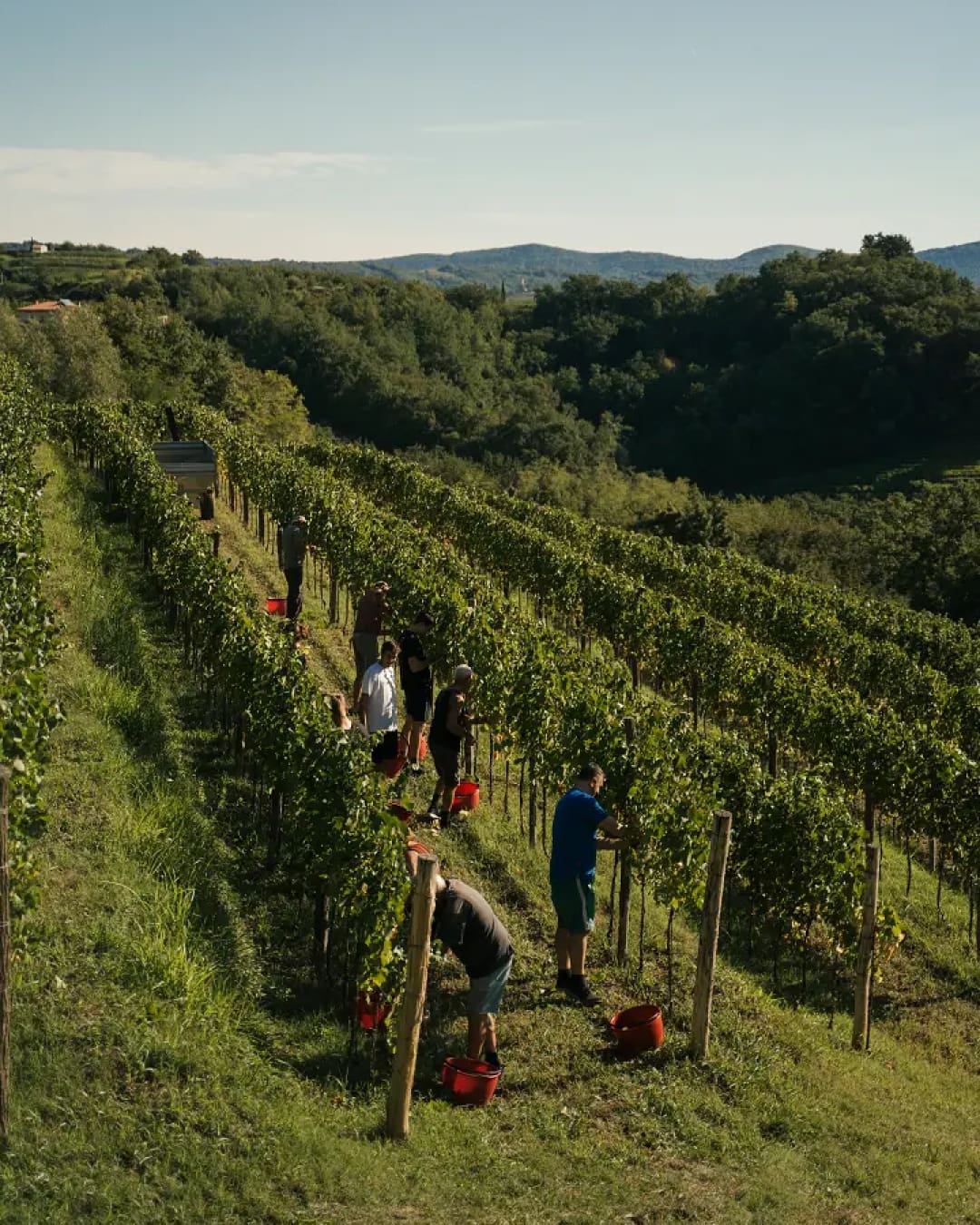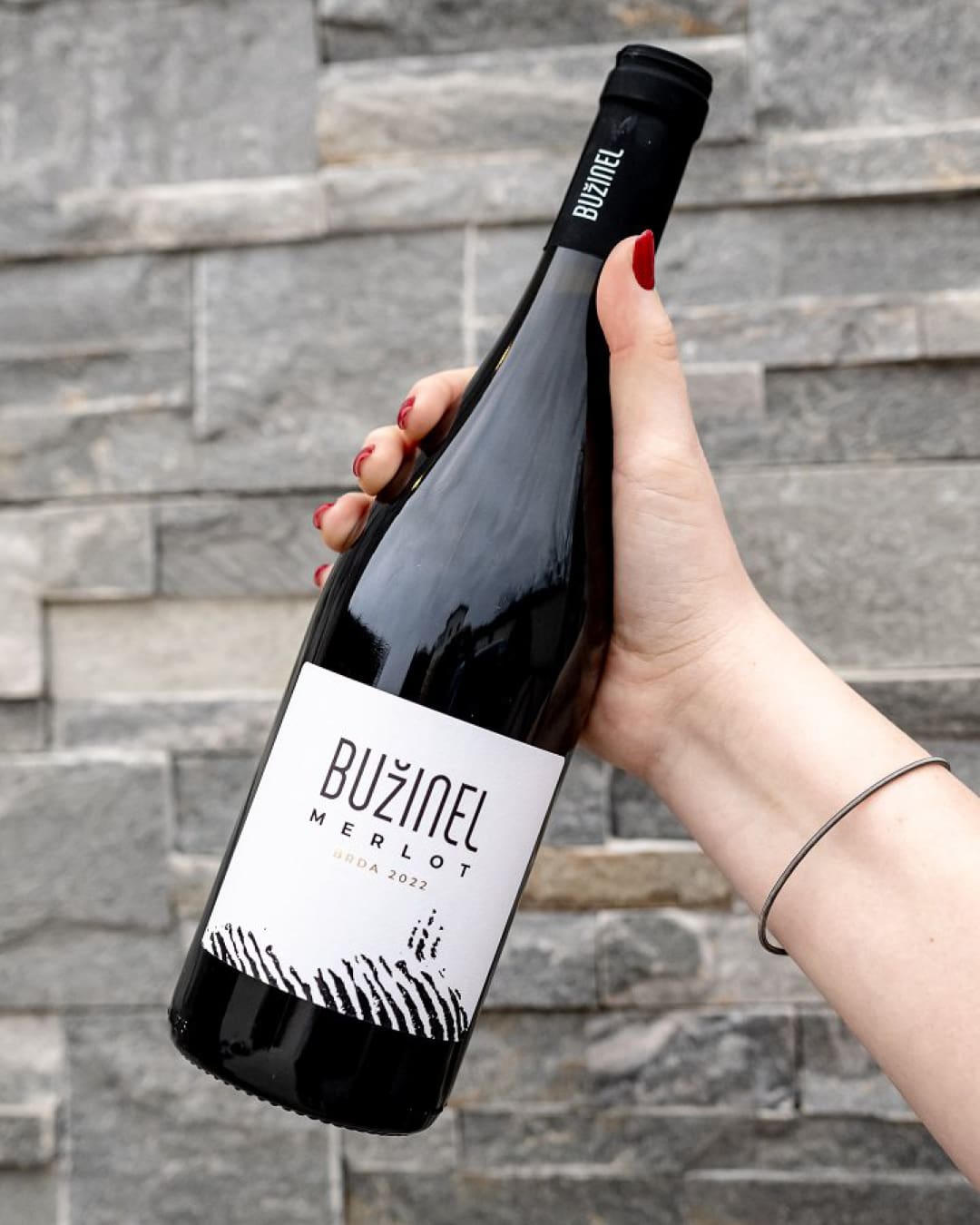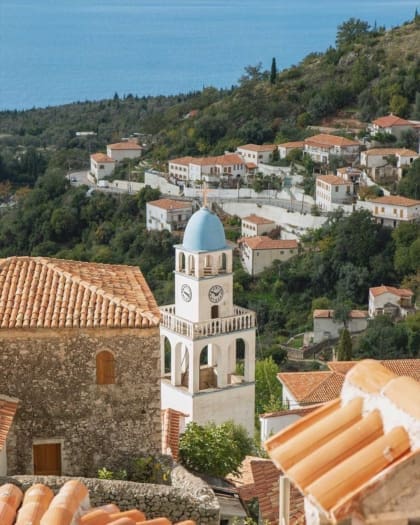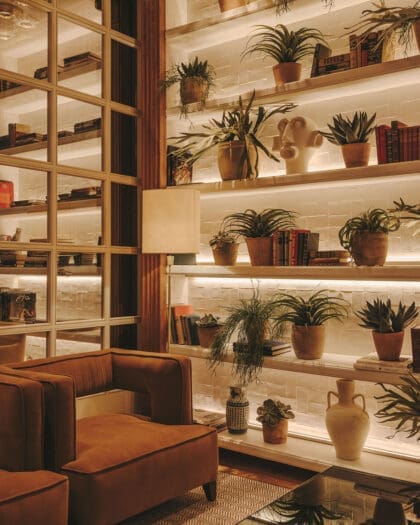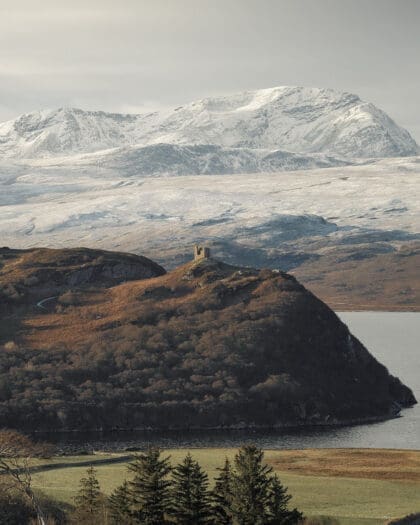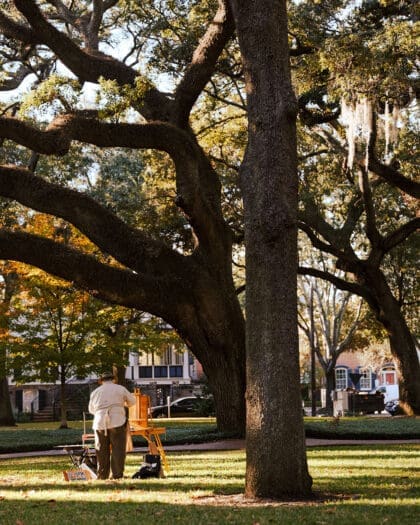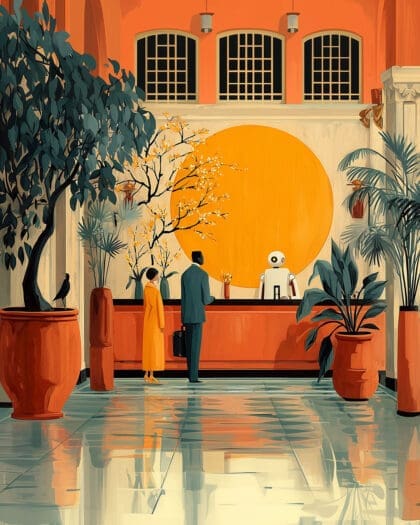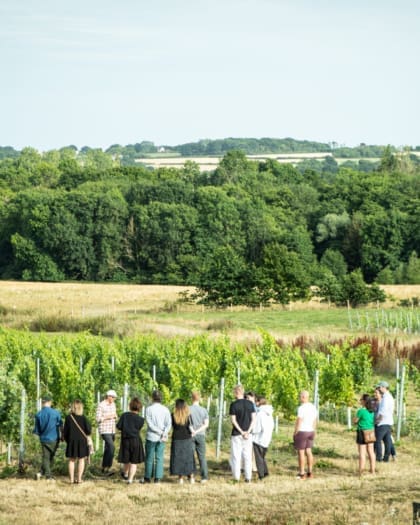
Charting the boom in wine travel – and the best vineyards to visit now
From the Napa Valley to New Zealand, a growing interest in the wine we drink means many more of us are prioritising it on our travels. As the wine tourism sector comes of age, we chart some of the world’s best destinations for wine lovers, from iconic vineyards and biodynamic wineries to raucous festivals and emerging regions
With a choir of crickets in the surrounding olive groves and a glass of wine on the shaded patio, Fattoria Corzano e Paterno, an agriturismo in the rolling Tuscan hills south of Florence is catnip to a food and wine loving tourist like me. Sustainably produced wines? Tick. Its own olive oil? Homemade sheep’s cheese? Huge tick. Like an increasing number of tourists, on a recent holiday to a region known for its wine, I sought out local vineyards to visit. I was in heaven – and it seems I’m not alone.
Whether at bars, vineyards, cellars or museums, travellers are increasingly thirsty for wine. This may be on a Sideways-style road trip to the best vineyards of Bordeaux, a festival like Ricci Weekender in Sicily, which sees British DJ Gilles Peterson and chef Ed Wilson team up for riotous food, music and – of course – low-intervention wine. Wine tours today may take in raucous regional harvest celebrations, architecturally avant-garde wineries or emerging destinations such as Valle de Guadalupe in Mexico, home to more than 150 producers.
The rise of wine tourism
In Italy, turnover relating to wine tourism grew by 11 per cent in the year to 2023, while the number of vineyards opening on Saturdays had jumped 30 per cent on the year before. The global wine tourism market is estimated to reach 293bn USD by 2033, up significantly from last year’s figure of 85bn USD. Cape Winelands Airport is set to open in South Africa in 2027, allowing wine heads to fly straight into touching distance of its vineyards. Even in England, which now has more than 400 commercial vineyards, holiday provider Independent Cottages this year launched a nifty calculator telling you how close you are to your nearest vineyard.
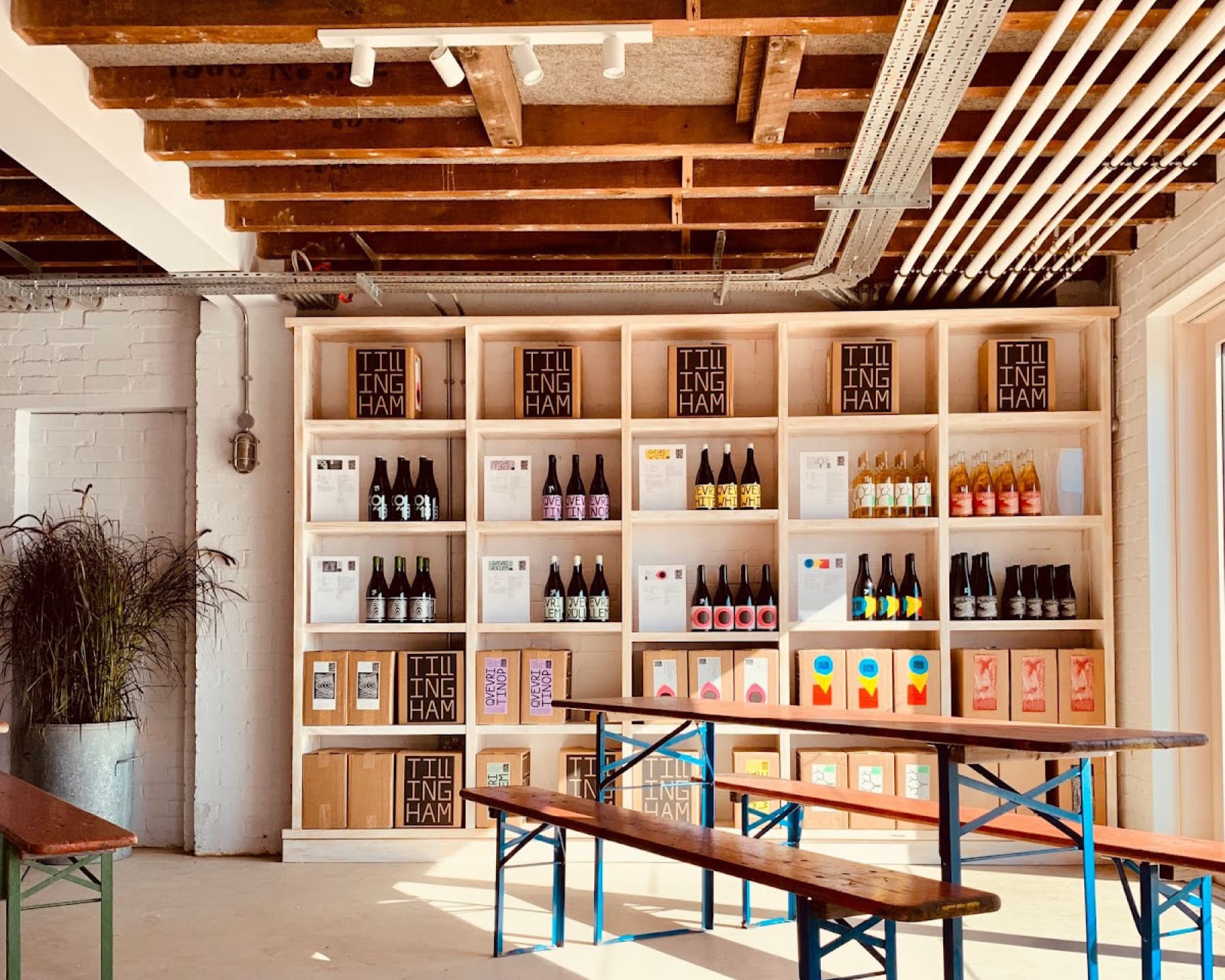
Whether linked to rising interest in the provenance of our food and drink or the growth of experiential travel, public interest and knowledge are soaring, and a new generation is falling in love with good wine – once a preserve of the moneyed elite. Increasingly, we want to know where our food and drink comes from, and wine is no different. Where cellars were once the focus for wine tourists, often collectors, vineyards are now the star attraction, and are meeting demand with ever-more sophisticated offerings. For Michael Kennedy, founder of California-based Fraiche Wine Group, which puts a boutique spin on the Italian agriturismo concept, Americans “began falling in love with fine food and fine wine over the past decade. It sparked the curiosity to see how and where things are made. The great thing is, wine is usually made in beautiful places.”
In his Napa spot The Cheese Shed (set in a 19th-century maturing room), which boasts 360-degree views of the volcanic vineyards of Coombsville, guests can sample wines from other Fraiche locations (including Napa Valley, Oregon, Bordeaux and Tuscany), with Kennedy explaining that the goal is “to connect people to the land and the place they’re in.” For American wine and travel writer Jillian Dara, The Cheese Shed is one of the most personal wine venues in Napa. “It’s intimate, rustic and unrepeatable,” she says of an experience that takes in a tour of the vineyard, caves and a pouring and tasting of all those wines in the Fraiche portfolio, singling out the estate’s Component as a single-variety wine that “can stand up to Bordeaux’s best”. For those looking to reduce air miles, it’s one way to try an estate’s globetrotting range in one place.
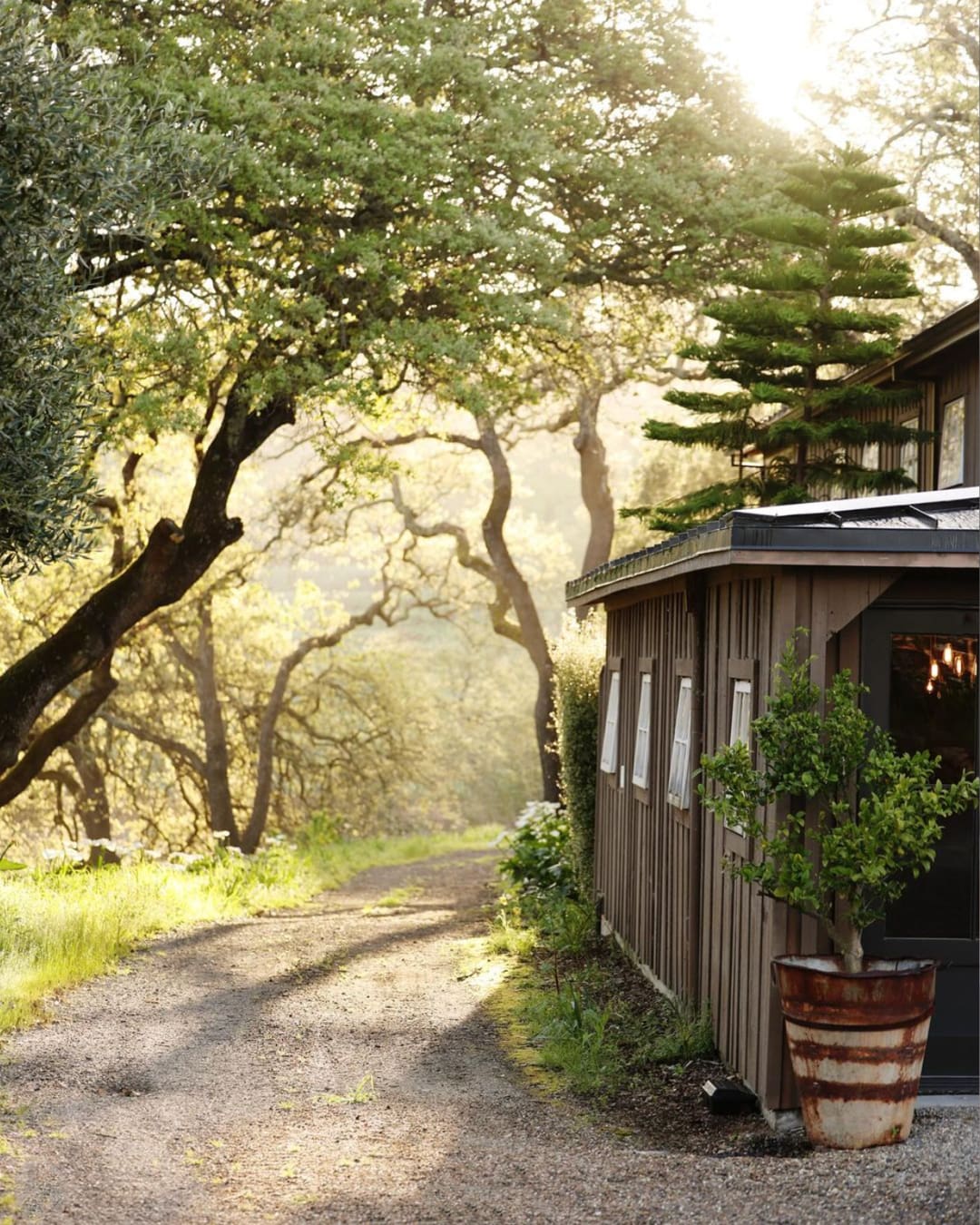
Wine and climate change are increasingly impossible to separate. Champagne – a region challenged by rising temperatures – has recently approved the use of a new hybrid grape, voltis, while Britain’s changing conditions have turned it into a top producer of sparkling wine. Where does wine travel, with its associated environmental baggage, fit in? For Natasha Hughes MW, a writer, educator and expert in wine tourism, it’s not the most intensive form of tourism. More often than not, it consists of people already in a region looking for a morning or afternoon activity – few travel solely for wine.
Nevertheless, Hughes says we can make vineyard visits more responsibly. “Some regions are far more aware of the need for wine tourism to be environmentally sustainable,” says Hughes. “Generally, these are places already taking measures to adopt sustainable practices in their vineyards.” Where possible, find organic, biodynamic and regenerative wineries. Cycle between vineyards if you can.
Sustainable wine travel
Try a lesser-known region rather than following the crowds to those destinations less prone to overtourism. That could be Oregon, whose pinot noirs are more delicate than California’s, instead of Napa. If South America’s your thing, Uruguay’s scene has exploded, and its fresh, saline albariño is world-beating. In France, the Jura Mountains’ wines have recently burst onto the scene, and this eastern region makes for an affordable – and no less beautiful – alternative to the increasingly unattainable Burgundy. Across the Alps into Italy, wine tourists are “yearning for a more rustic and authentic experience in comparison to better known cities like Florence and Siena,” says Kennedy. “Smaller towns often offer incredible hospitality, fantastic food and hidden-gem wineries away from the crowds.”
Back at Fattoria Corzano e Paterno, I feel a pang of envy for the happy families staying overnight; children run merrily through the vines as parents sip rosé in the courtyard. I load the car with more pecorino and chianti than strictly necessary, but as soon as I can I’ll be back to stay.
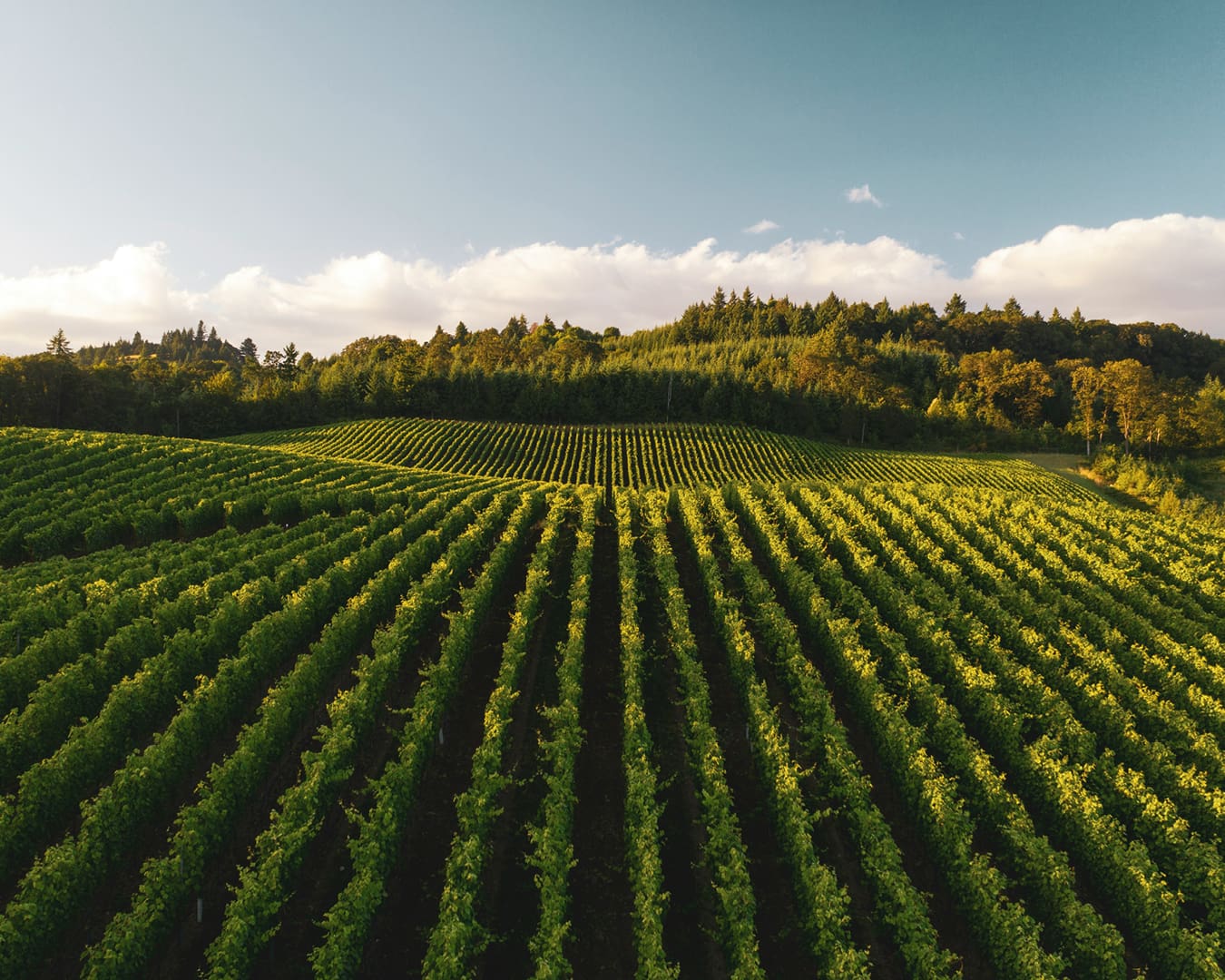
Six of the best wine destinations to visit now
Tillingham, East Sussex, UK
Best for: Natural wines and glamping
Address: Dew Farm, Dew Lane, Peasmarsh, East Sussex TN31 6XD
Price: From 205 GBP per night
The UK has gone from almost nothing to booming in terms of wine tourism in the past few decades. The south has experienced unprecedented growth, but areas as far flung as Wales and Yorkshire are welcoming new vineyards and opening wine trails. Visitors are even crossing the Channel – and biodynamic producer Tillingham is one of the main draws. It helps that it’s set in beautiful rolling countryside near Rye on the East Sussex coast. But it’s not just brilliant pet nat, Georgian-style qvevri wines and citrussy chardonnay; there’s great food – from a full-blown restaurant serving vegetable-led local fare to a pizzeria, and plenty of overnight options, including stylish double rooms and glamping bell tents. Volunteers can sign up to help during the harvest and there are regular foraging forays and wellness days, too.
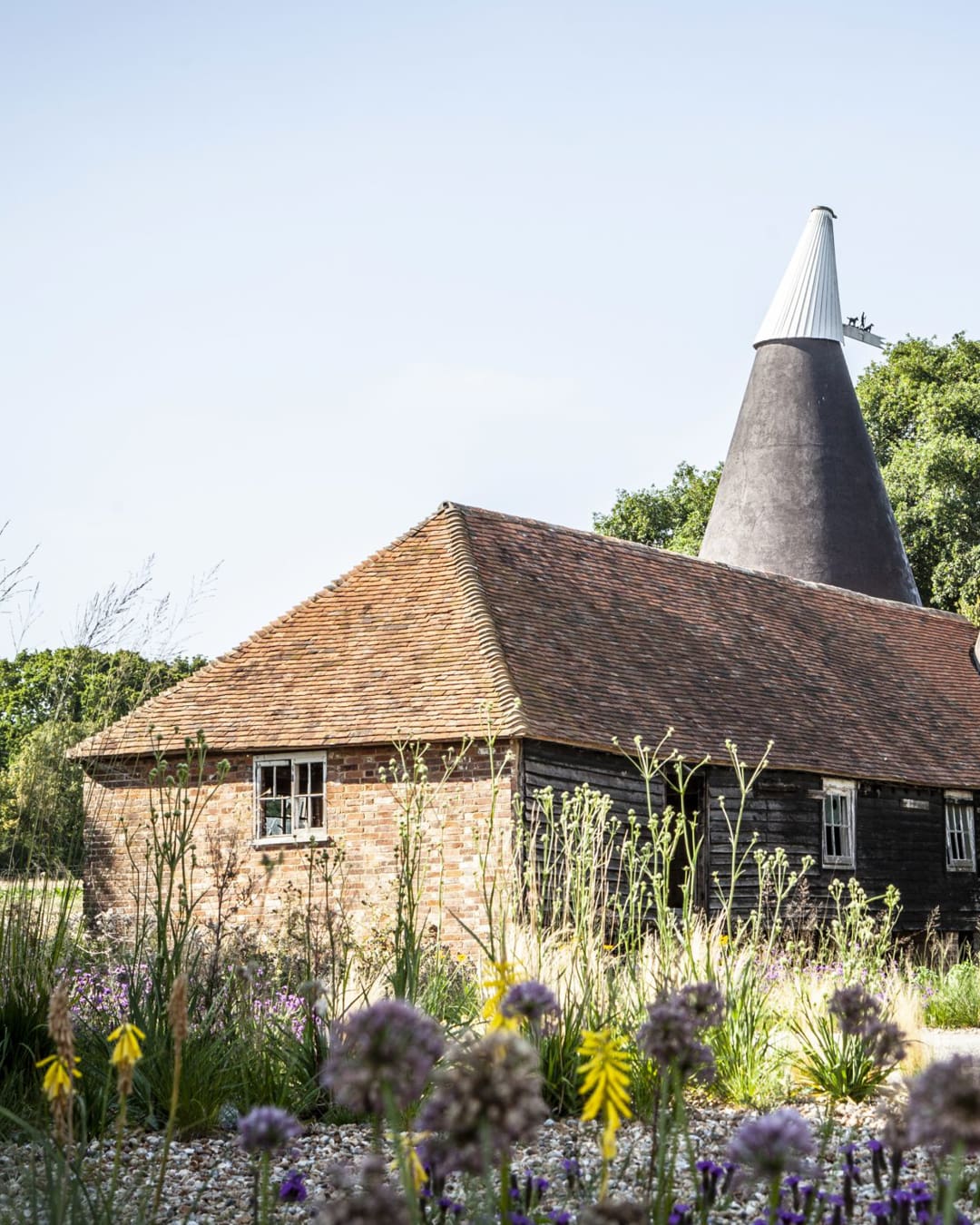

Fattoria Corzano e Paterno, San Casciano Val de Pesa, Italy
Best for: Sunny summer holidays in beautiful villas
Address: Via S Vito de Sopra, 50020 San Casciano in Val di Pesa FI, Italy
Price: From 105 GBP per night
Set in the rolling picturesque hills south of Florence, this agriturismo is tucked away from the touristy fervour of Greve in Chianti. It may not produce Super Tuscan wines, but the chianti here is superb. Order a glass of red (there’s a fine 100 per cent sangiovese), white (a blend of six grapes including chardonnay, trebbiano and sauvignon blanc) or sangiovese rosé (or all three) in an old stone house converted into a shop and bar; pair with a plate of its homemade sheep’s cheese (the sheep are used to provide natural fertiliser to the vines) and while away a sunny afternoon in the shade. The 200-hectare farm is beautiful and several of the farmhouses have been converted into guesthouses that are so pretty they could be film sets.

Spier, Stellenbosch, South Africa
Best for: Wildlife lovers
Address: R310 Baden Powell Dr, Stellenbosch, 7603, South Africa
Price: (Reopening early 2025)
Just a short drive from Cape Town, you’ll find yourself a world away from the bustling city in this glorious vineyard surrounded by mountains. The wine is superb, ranging from South African takes on traditional Rhône and Bordeaux blends to saline, minerally whites – especially its Signature Collection Chardonnay. Spier has won awards for sustainability, including being named a WWF Conservation Champion wine estate. Farmed regeneratively, it conserves endangered renosterveld (an important clay-based local habitat), and has created nature corridors to attract wildlife back to the farm. Visits include farm walks, tours of its market garden and mountain bike trails. Don’t miss the chocolate and wine tastings, too.
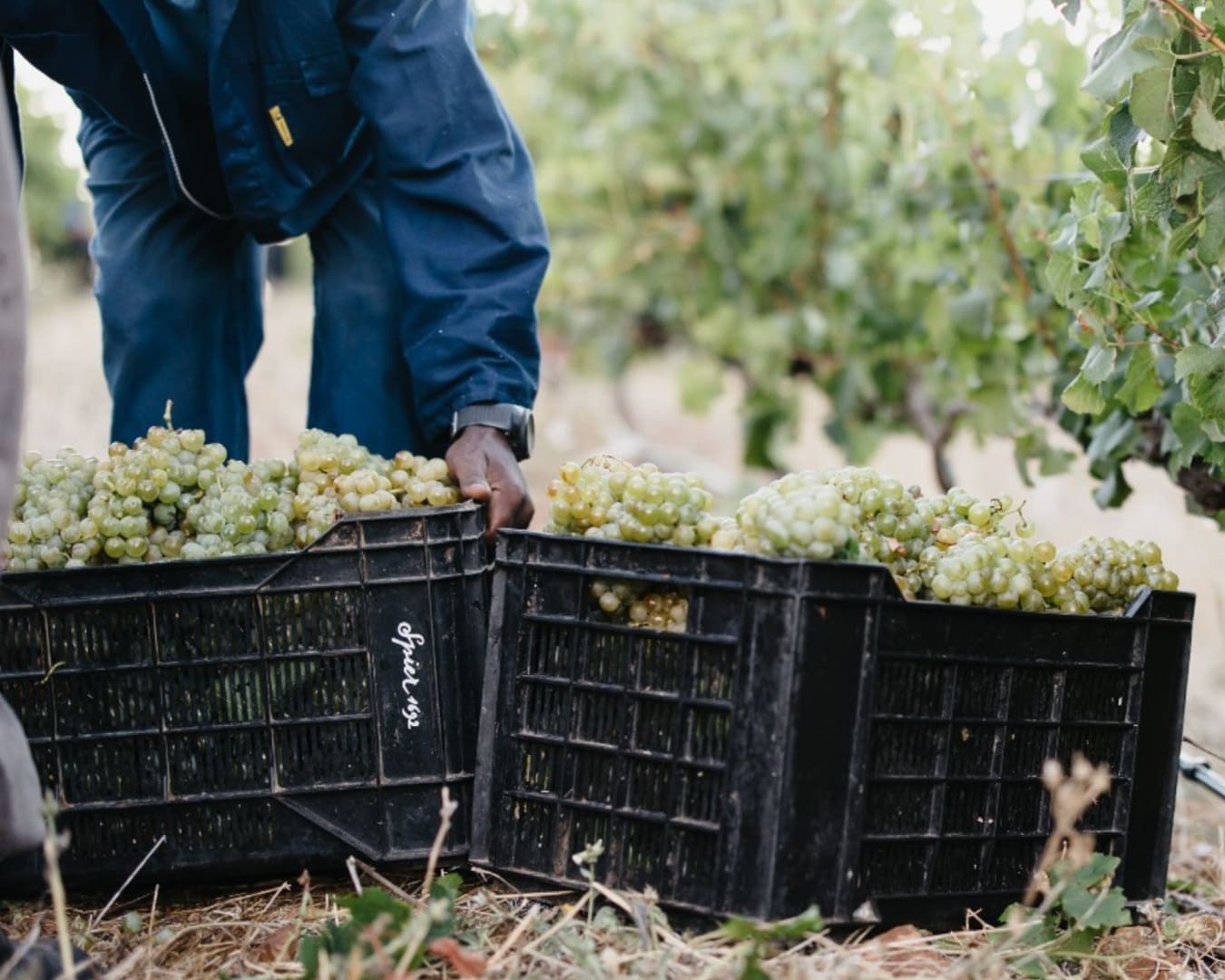
Domaine Bousquet, Mendoza, Argentina
Best for: Breathtaking views of snow-peaked mountains
Address: RP89 km7, M5561 Tupungato, Mendoza, Argentina
Price: From 130 USD per night
Organic since 1997, and almost exclusively biodynamic as of 2024, Domaine Bousquet is one of South America’s foremost eco-friendly vineyards. Founded by a Frenchman who moved to the Uco Valley in the 1990s, this vineyard, with the Andes forming an impressive backdrop, produces top organic malbec, while its rosé, a mix of pinot noir and chardonnay, has earned plenty of plaudits. There are tours and tastings aplenty, and the vineyard’s Gaia Restaurant and Gaia Lodge boutique hotel make the most of the estate’s own organic produce, accompanied by breathtaking views of the snow-capped mountains. If you want to venture further afield, Uruguayan meat-maestro Francis Mallmann boasts two restaurants in the region.

Château Prieuré Marquet, Bordeaux, France
Best for: A traditional French chateau with unconventional wines
Address: Marquette, 33910 Saint-Martin-du-Bois, France
Price: From £270 per night
A restored 15th-century manor house in the heart of Bordeaux, not far from the centre of St-Émilion (one of the most iconic Bordeaux wines), makes for an ideal base to explore the region’s historic vineyards. But Château Prieuré Marquet is a little different, says Michael Kennedy. Founded by a Franche-Comté native who isn’t afraid to stray from the region’s (usually staunchly adhered to) traditions, many of the wines here, grown with minimal intervention, are made with non-Bordeaux grapes like gamay. This beautiful winery is an oasis in southwest France, where you’ll find a blend of Bordeaux tradition with breaking the rules – perhaps heralding a new direction for the historic region.
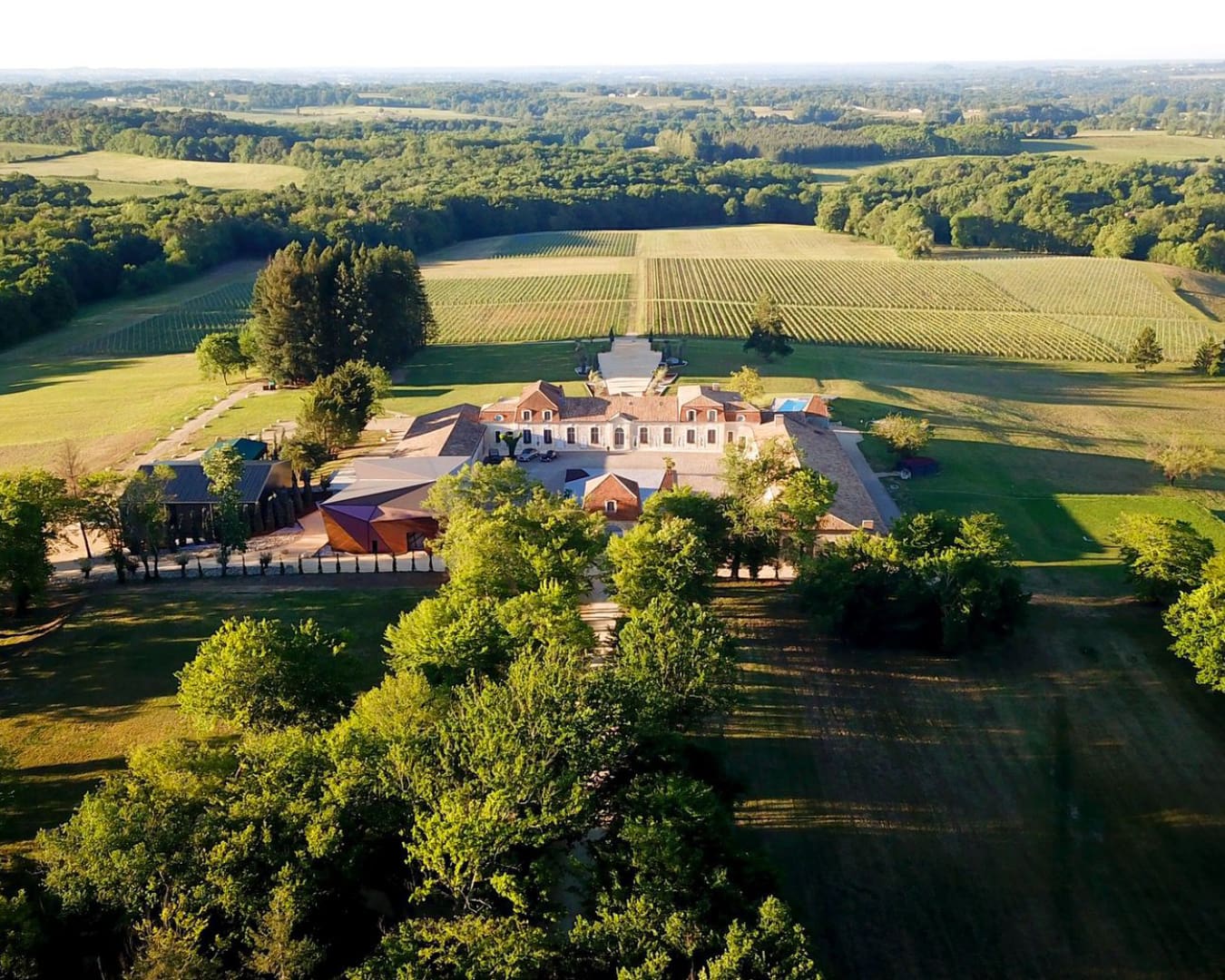
Bužinel, Slovenia
Best for: Visiting an unexplored region
Address: Plešivo 37, 5212 Brda, Slovenia
Price: From 175 USD per night
Slovenia has emerged as one of the top names in natural and organic wines, with an increasing focus on local varieties like rebula, furmint and refosco. The region has been producing top wine for millennia, and is quickly earning plaudits for its quality white, orange and pet nats in particular. Bužinel is an organic winery a stone’s throw from the border with Italy, producing excellent reds, whites, oranges and sparkling. Its merlot is intense and fruity, a mix of ripe cherry and plum, while its pale white tokaj has notes of grapefruit and almond. Its on-site restaurant offers relaxed fine dining with views of the Brda mountains – arguably the most underrated spot in the Alps.
